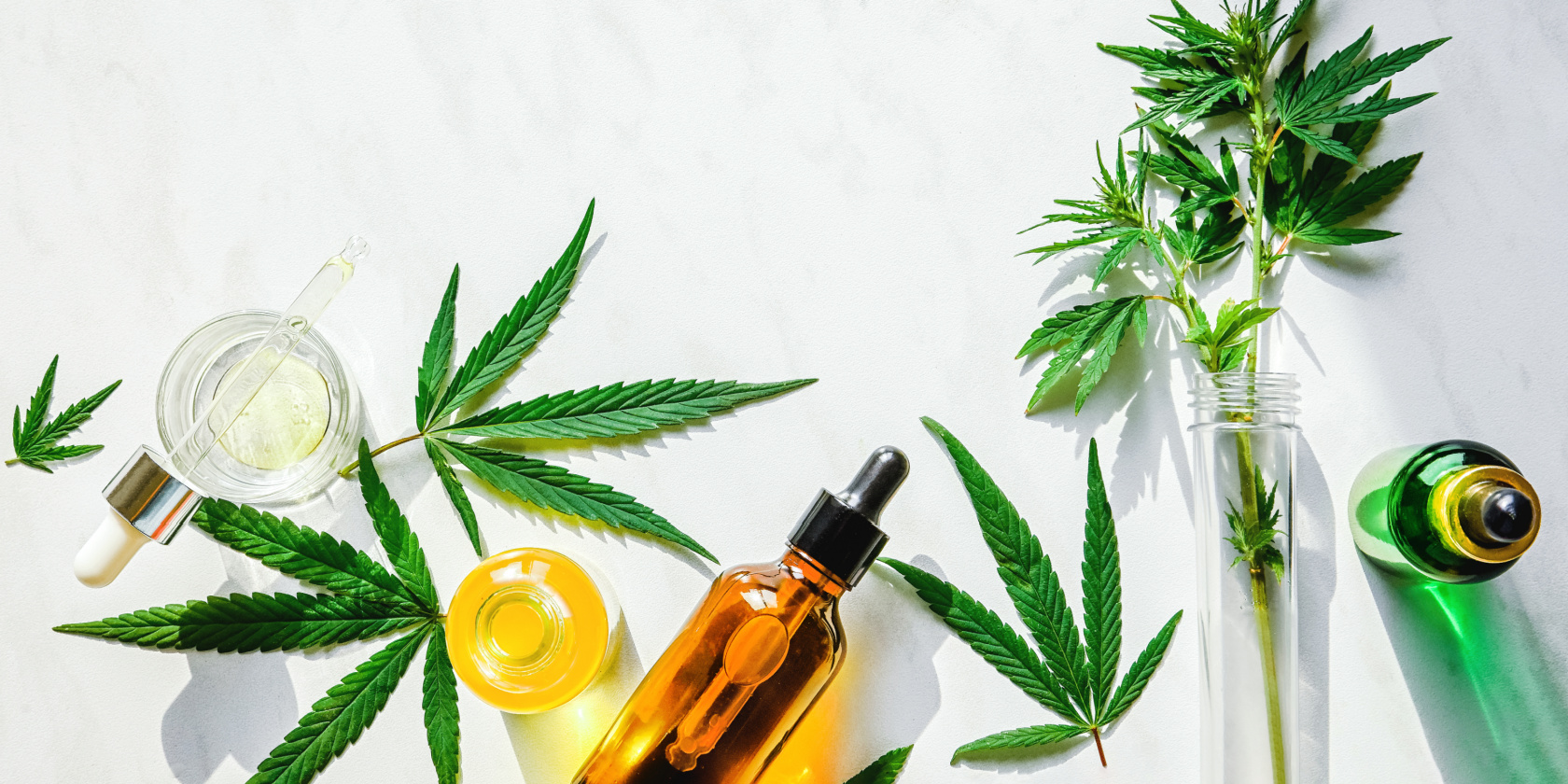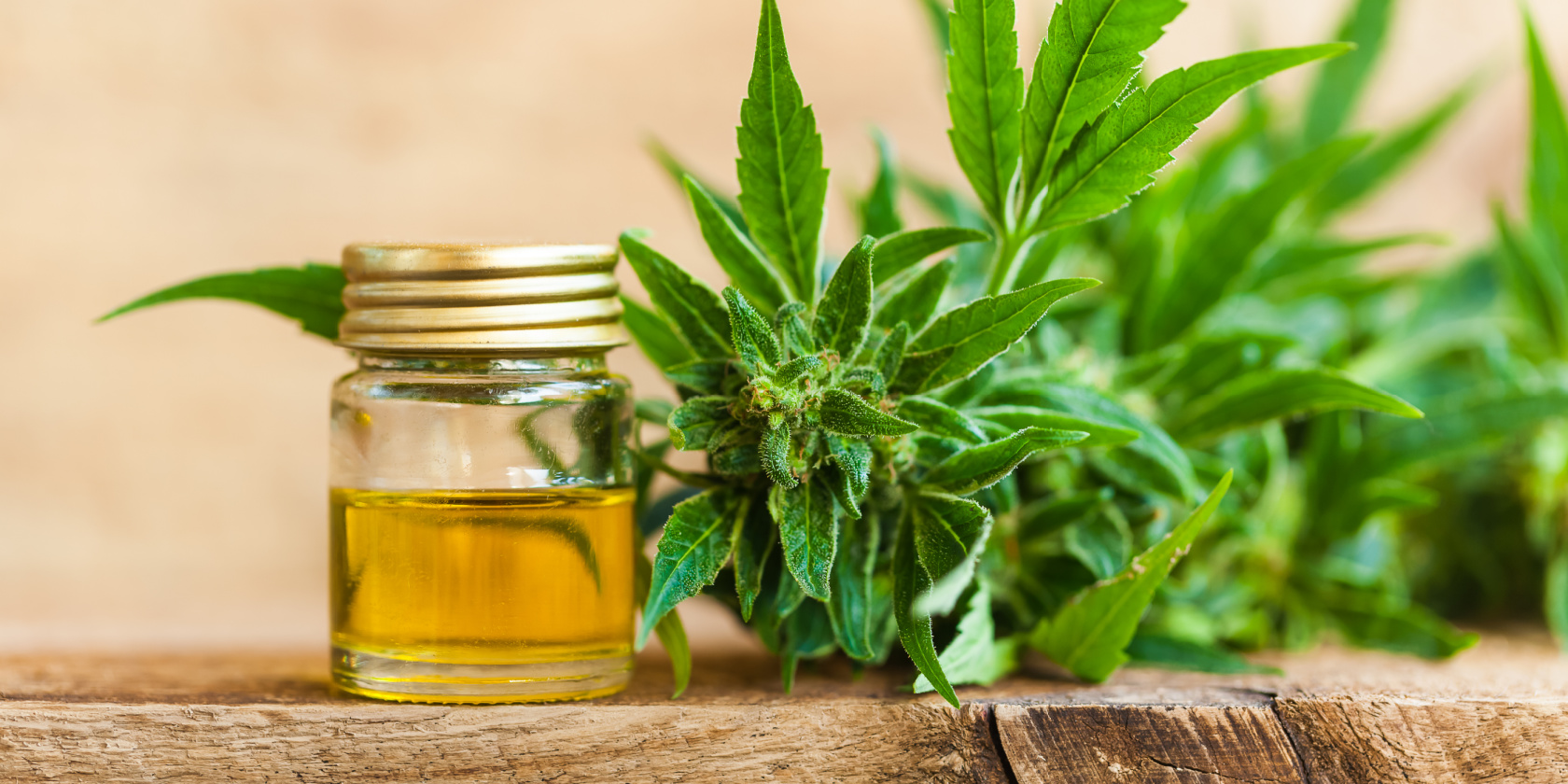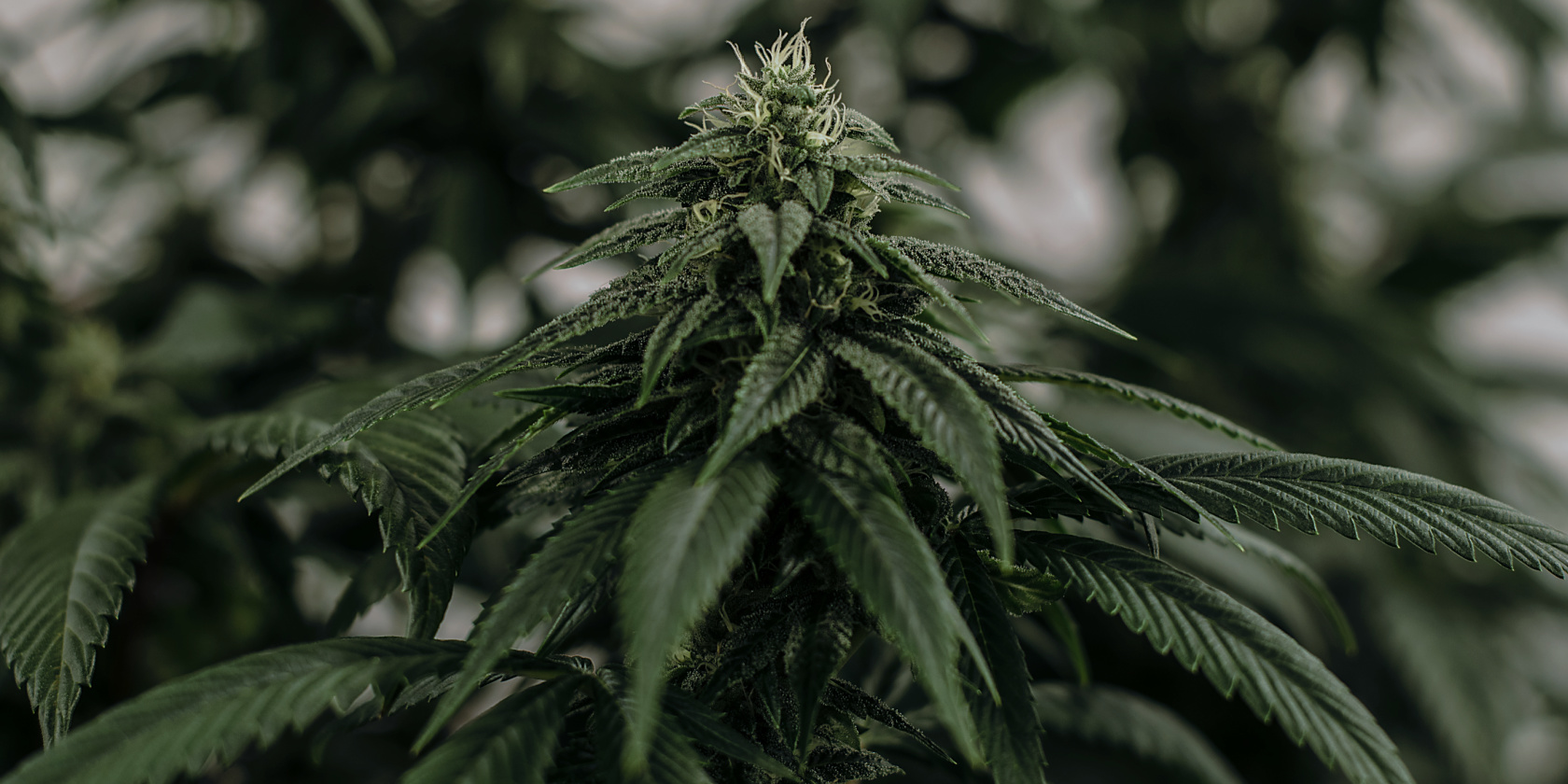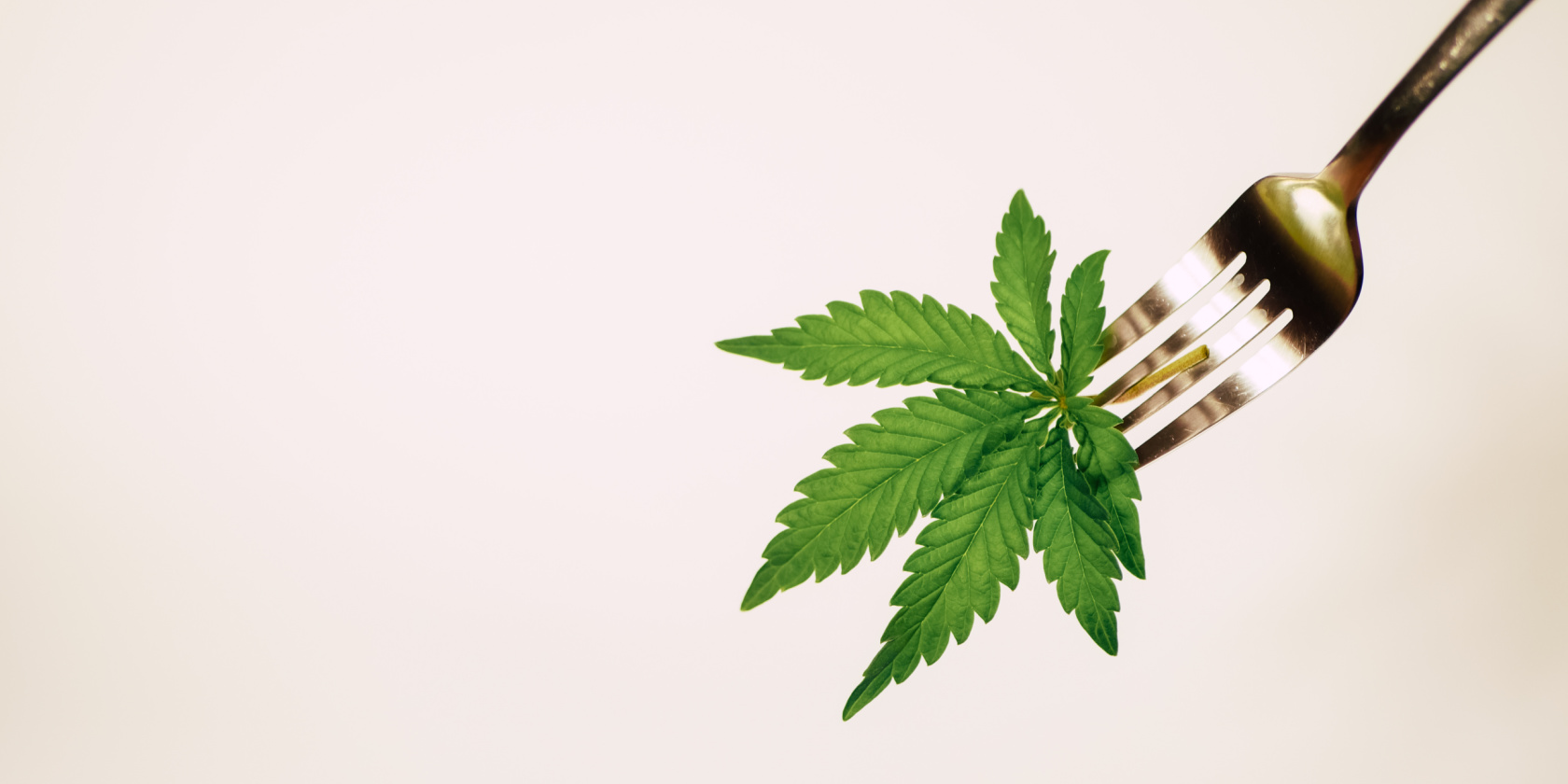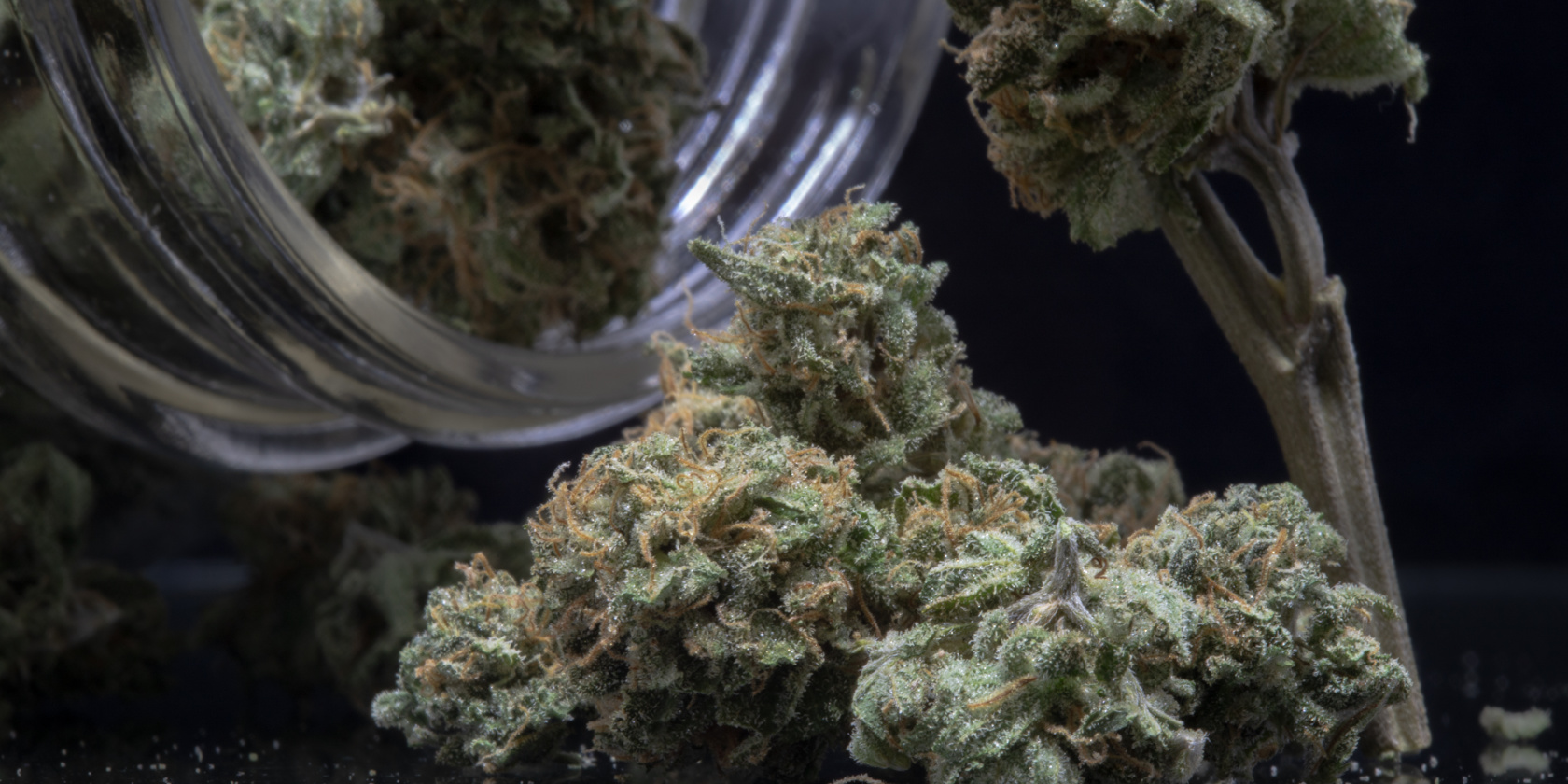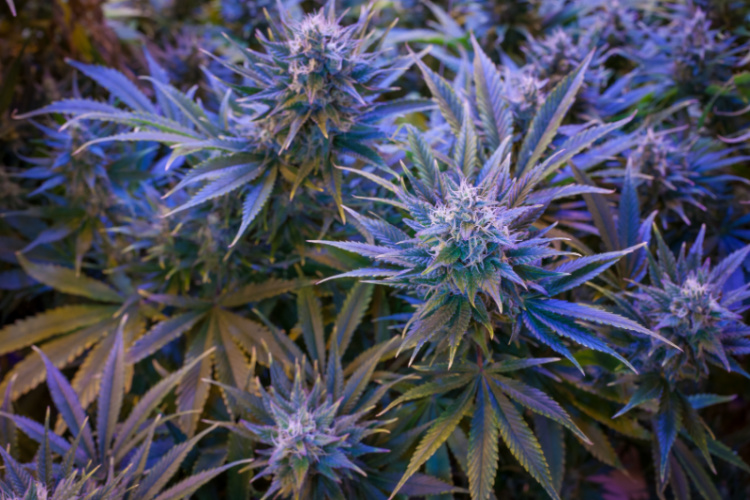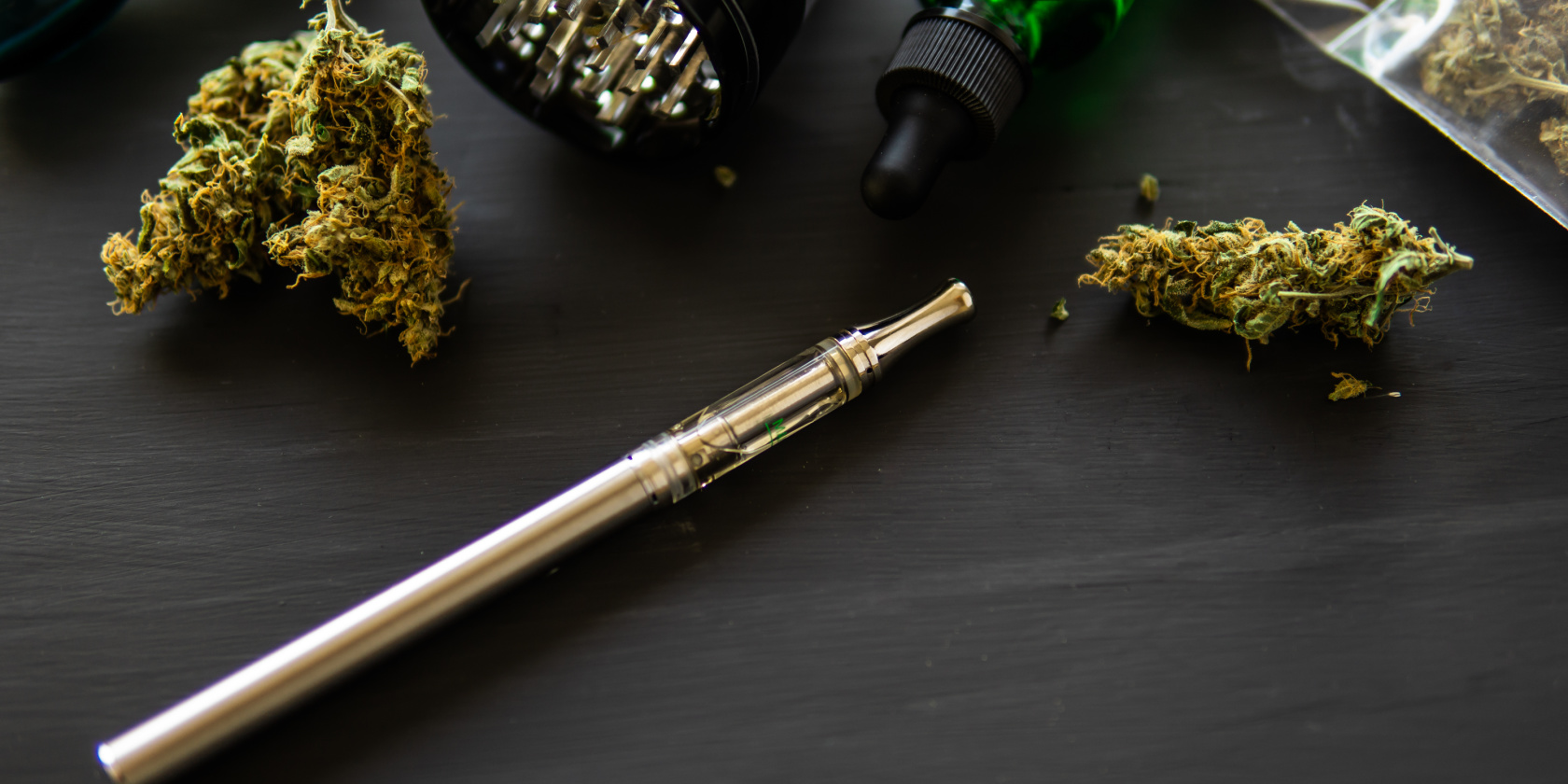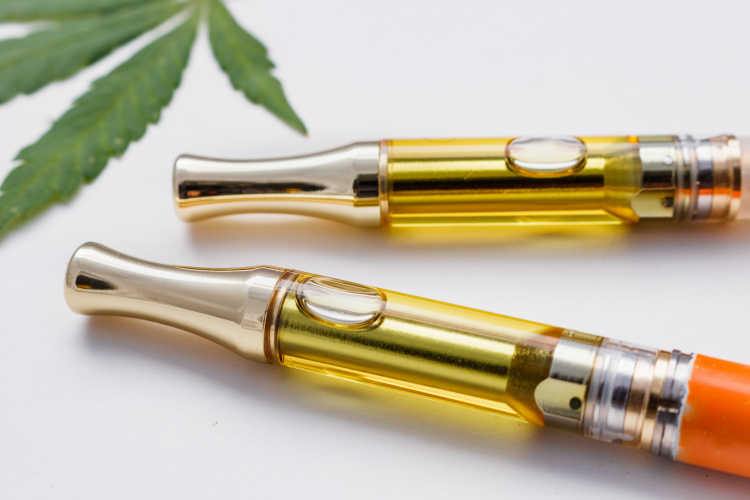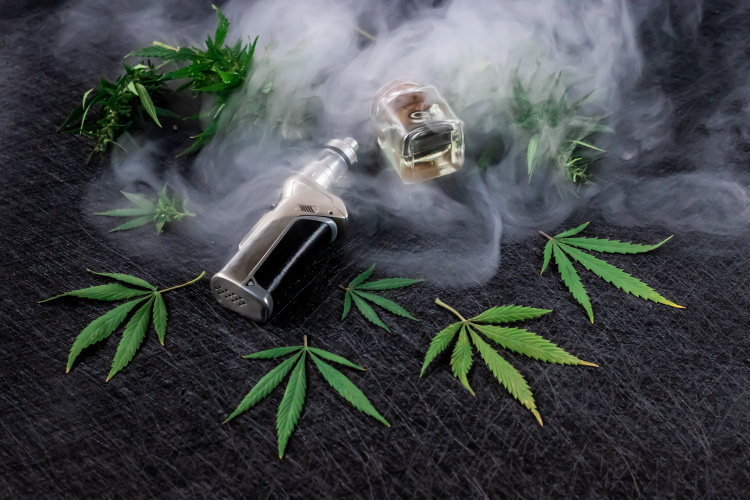CBD in DC: Is it Legal & Where Do I Buy It?
With so many questions about cannabis—Where is it legal? Can I take it across district or state lines?—it’s no wonder so many of us are confused about CBD, one of the plant’s major compounds (and one with a great many purported medicinal effects). If you’re left wondering, “Are CBD products legal in Washington, D.C.?” today’s post is for you. We’ll explain exactly what CBD is, where it’s legal, and where to buy it in the District of Columbia.
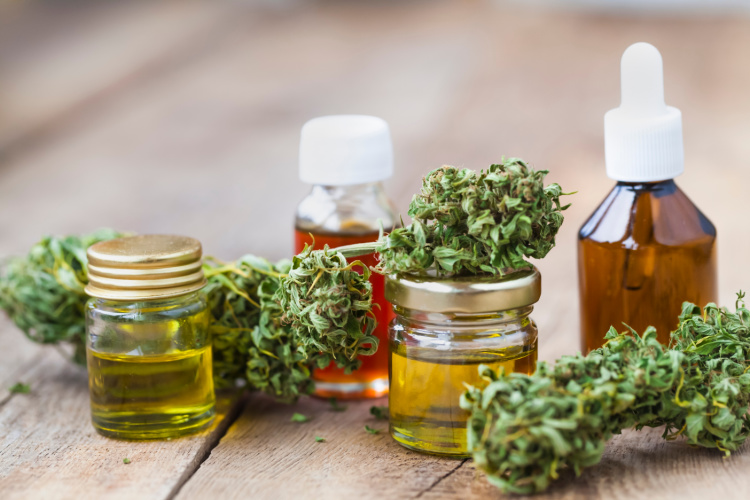 What is CBD?
What is CBD?
Let’s begin with the basics. The cannabis plant contains hundreds of natural compounds and continued research on the plants is unlocking the science behind the plant’s benefits. Among the most studied compounds in cannabis are cannabinoids, which can be described as the plant’s major “active ingredients.”
Cannabinoids include THC—the compound most directly responsible for cannabis’ distinctive “high”—and CBD. Both of them deliver a wide range of useful medical effects. For instance, THC has been shown to reduce several types of pain. CBD, in addition to helping treat certain seizures, has shown promise in reducing anxiety and stress. Unlike THC, CBD’s psychoactive effects are very minimal. At most, some people experience a gentle cerebral “buzz.”
Due to its lack of intoxicating effects, CBD bought outside a legally licensed dispensary is typically derived not from the cannabis plant, but from it's cousin, wild hemp.
Because CBD’s psychoactivity is so mild, high-CBD cannabis products are a great choice to use with microdosing. Researchers have begun to demonstrate that CBD works particularly well in concert with THC, a phenomenon often called the entourage effect.
Cannabis & Sleep: The Best Strains for Insomnia and Nightmares
In case you haven’t noticed, cannabis is all over the news these days. From new research suggesting medical cannabis may help fight pain and inflammation, ease anxiety, and control certain types of seizures, it seems there’s no end to potential uses for the cannabis plant. And this holds doubly true for one of the most prevalent health issues facing us today: Insomnia and related sleep disorders. Adding to a wealth of anecdotal accounts, a growing body of evidence suggests that using cannabis for sleep may be an effective and sustainable strategy.
Does cannabis help you sleep? If so, what are the best cannabis products for sleep? We’ll dig into these questions and others in today’s post. By the end, you’ll have a solid understanding on how to use cannabis for insomnia and other common sleep disorders.
Insomnia: An Introduction
Insomnia has several subtypes, but the simplest way to categorize the disorder is to define insomnia as: “inability to fall asleep and/or stay asleep.” In truth, insomnia is a complex group of sleep disorders. While many of us find the variations on the possible causes frustratingly familiar and difficult to differentiate, the reality remains: an estimated 70 million Americans suffer from insomnia or other sleep disorders at any given time, and insomnia can be notoriously difficult to treat.
If you or someone you love has ever suffered from insomnia, you’re probably familiar with the countless remedies currently available. Ranging from gentle homeopathic drops to powerful—and potentially risky—pharmaceuticals such as benzodiazepines, none can be said to be 100% safe and effective. But as we’ll see, the growing acceptance of medical cannabis is fueling hopes that it might prove to be an effective and sustainable solution. First, though, it’s useful to understand that cannabis isn’t a single medicine, but many medicines in one plant.
 Cannabis for Sleep: What the Science Says
Cannabis for Sleep: What the Science Says
We tend to think of cannabis as a single drug, but the truth is a bit more complicated. The cannabis plant actually contains several-hundred compounds—including cannabinoids, terpenes, and flavonoids. As far as cannabis for insomnia goes, the two most important compounds to know are the cannabinoids THC and CBD.
THC is the compound most directly responsible for cannabis’ distinctive “high.” By comparison, CBD is mildly psychoactive, delivering at most a very gentle cerebral “buzz.” That’s why CBD on its own is legal in all 50 states and the District of Columbia. In addition to their subjective effects, both THC and CBD deliver a wide range of medical benefits, several of which we outlined earlier in this article.
To understand how cannabis may affect our sleep, it’s useful to keep those two cannabinoids in mind. While the federal prohibition of cannabis has hampered research into its use for insomnia, we do know that THC and CBD exert different effects on our sleep cycles.
For instance, one sleep study found that cannabis with a higher ratio of THC to CBD reduced the amount of test subjects’ rapid eye movement (REM) sleep. Why is this important? It turns out that REM is the sleep stage in which people experience dreams, and the theory is that by reducing dreams, sleepers spend more time in a restorative “deep sleep” state.
This also ties in to the issue of nightmares. In addition to being unpleasant and unsettling, nightmares are a major cause of sleep disruption. Just like other dreams, they occur during REM sleep. A reduction in REM sleep seems to correlate with fewer nightmares—a finding supported by a separate, small-scale sleep study.
Then there’s the subject of post-traumatic stress disorder, or PTSD. While the intersection between cannabis and PTSD is a wide-ranging topic in and of itself, research suggests that moderate cannabis use is by and large an effective response to PTSD-related sleep issues.
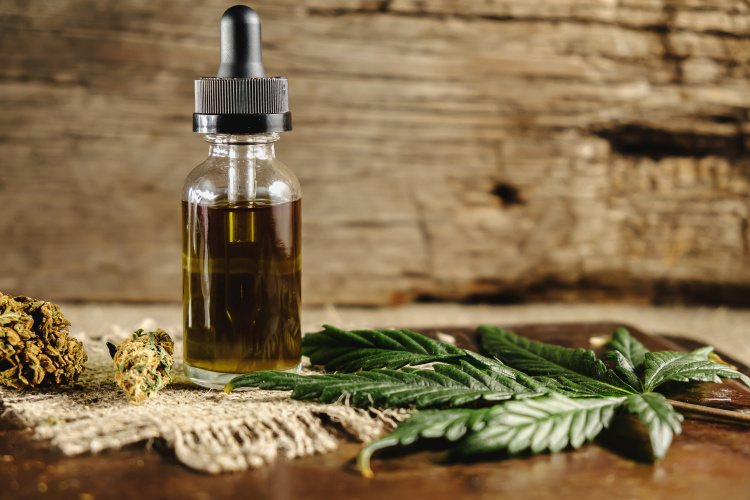 CBD for Sleep
CBD for Sleep
Thus far, we haven’t addressed the topic of CBD and sleep. However, we mustn’t miss the promising potential of this important compound. There’s some evidence that the “second cannabinoid” may be even more beneficial than THC for sleep. One study from 2017 found that CBD may hold promise for reducing REM-related sleep disorders and quelling excessive daytime sleepiness. A large-scale study from 2019 found that CBD helped reduce anxiety—a major factor in sleep disruption—and improved sleep scores in most of the test subjects.
Taken together, the research suggests that by carefully tailoring cannabis ratios for the physiologies and needs of individual patients, clinicians could usher in a new era of gentle, sustainable, and effective treatments for insomnia and other sleep disorders.
Given what we know about cannabis for insomnia, we can make some educated choices about specific cannabis products. And this local team—at the District of Columbia’s longest-running medical cannabis facility—has some suggestions.
 Best Cannabis Products for Sleep: Specific Recommendations
Best Cannabis Products for Sleep: Specific Recommendations
Standard: Sleep, by Abatin Wellness
Specifically formulated to encourage deep and restful sleep without grogginess, this tincture contains a precise mixture of the cannabinoids THC, CBD, and CBN. They’re empowered by specific terpenes, the aromatic compounds in cannabis and other natural products, geared towards relaxation and rest.
Granddaddy Purple Cartridge, District Cannabis
This much-loved indica strain delivers a potent hit of cerebral dreaminess and full-body relaxation. Known for a strong “couch lock” effect, it’s just the thing to get you tucked into bed for a night of deep, restorative, and long-lasting sleep. This cartridge contains .5g of concentrate, and is designed to fit a standard 510-style vape pen.
Classic Cookies, Abatin Wellness
An alternate name for GSO—itself an alternate name for the trademark-protected “girl scout cookies”—this legendary strain is known for imparting a deep and long-lasting euphoria. Its legions of fans turn to it for reliable relaxation, a head-to-toe calming effect, and the lure of a restful night of sleep.
Pre-Roll 6-Pack: Gelato Cake, District Cannabis
Yet another strain with a fervent fanbase, this cross between Gelato and Wedding Cake comes in a beautiful handmade case of prerolls for your convenience. Packing a hefty dose of relaxing THC, Gelato Cake’s delicious flavor profile—think sweet crushed grapes and aged cognac—is primed to ease you into deep, stress- and pain-free sleep.
Best Cannabis Products for Sleep: Wrapping Up
Whether you’re comfortable with the psychoactivity of THC or prefer the gentler, stress-reducing effects of CBD, the best cannabis product for sleep that will suit you to a T is out there waiting for you. If you’d like more guidance, check with the team at Washington, DC 's longest-running medical cannabis dispensary for expert recommendations and a stellar lineup of cannabis products!
Understanding Cannabis Terpenes: A Foundational Guide
We’ve talked about a few of the most important compounds in cannabis before: cannabinoids such as THC and CBD that give the plant its medicinal and euphoric effects. But while we sometimes describe the cannabinoids as the major “active ingredients” in cannabis, they’re hardly the only piece of the puzzle. If you’re new to cannabis or looking to deepen your knowledge, it’s time to get familiar with cannabis terpenes.
A large family of aromatic oils, cannabis-derived terpenes are best known for giving different strains their distinct aromas and flavors. Behind the scenes, these compounds also lend powerful medicinal benefits to the cannabis plant’s already potent effects. Let’s dive in!
What Is a Cannabis Terpene? An Introduction
In scientific lingo, terpenes are aromatic hydrocarbons—what many of us might call “essential oils”—found in the cannabis plant. They’re produced and secreted by trichomes, the same tiny silvery glands that produce THC, CBD, and other cannabinoids.
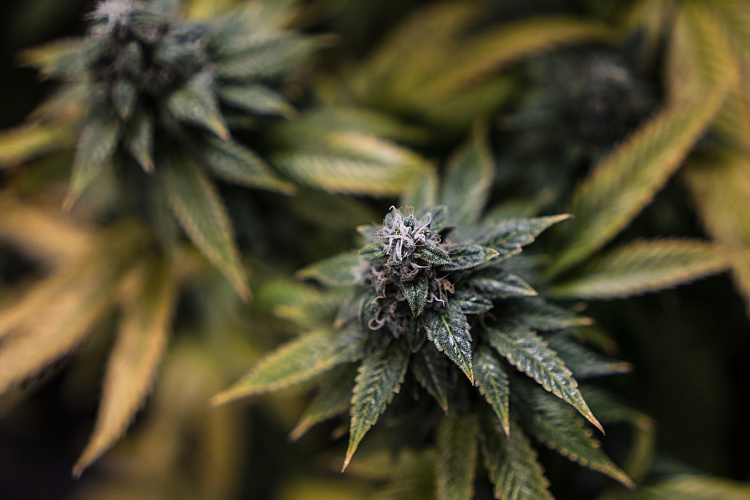
But terpenes are hardly unique to cannabis. If you’ve ever wondered why cannabis can smell like fresh fruit, Christmas trees, or even Diesel fuel, terpenes are the common denominator. They occur in countless natural flora, and even in some insects and animals! In fact, some botanists believe that terpenes are the single largest and most diverse group of natural products on the planet. For the purposes of this post, we’ll stick with the topic of cannabis-derived terpenes.
As we’ve hinted, terpenes do more than simply add enticing flavors and aromas to cannabis. Research suggests that terpenes work in partnership with cannabinoids in what’s termed the “ensemble” or “entourage effect” to produce specific therapeutic results. While still theoretical, a growing body of evidence supports the concept, and it may hold the key to future therapies based on cannabis-derived terpenes.
What Is a Cannabis Terpene? Meet the Top Five
There are a great many terpenes in cannabis (at least 150 of them)! Today, let’s begin with the five most common:
Myrcene
Just as THC is the most abundant cannabinoid in cannabis, myrcene is its most abundant terpene, meaning it is found in some concentration in the majority of strains. Characterized by a fruity and grapelike flavor, myrcene is gently sedative. What’s more, this terpene synergizes and helps potentiate the actions of other terpenes and cannabinoids, making it a crucial player in cannabis’ active ingredient ecosystem.
Myrcene-rich strains include: Skunk XL, White Widow, and Special Kush
Alpha-pinene and Beta-pinene
Known collectively as “pinene,” these related terpenes are identified by their distinctively piney aroma. You’ll also find this terpene in pine trees, orange peels, and herbs such as basil and rosemary. Studies suggest that pinene exerts a gentle anti-inflammatory effect, reducing inflammatory responses such as asthma.
Pinene-rich strains include: Strawberry Cough, Blue Dream and Dutch Treat
Caryophyllene
This spicy and peppery terpene is being investigated for its analgesic and anxiolytic effects. It also binds to our cells more readily than many other terpenes, making it a valued ingredient in some topicals and balms.
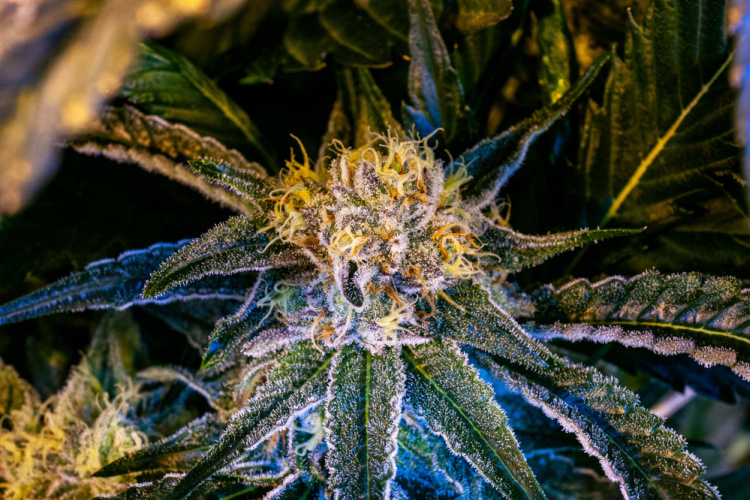
Caryophyllene-rich strains include: Super Silver Haze, OG Kush, and Rock Star
Limonene
Bright and cheerful-smelling, this citrus-scented terpene adds its uplifting effects to many cannabis strains. Clinical studies underscore its potential use to reduce stress and anxiety. And believe it or not, at least one study suggests limonene may have a role to play in fighting COVID-19.
Limonene-rich strains include: Sour Diesel, Durban Poison, and Jack Herer
Linalool
A main component in the classic “marijuana smell,” linalool may also help fight anxiety and depression. Research suggests this important, cannabis-derived terpene might also help reverse the cognitive impairment and memory loss associated with neurodegenerative disorders such as Alzheimer’s Disease.
Linalool-rich strains include: Amnesia Haze, Special Kush, and Lavender
Cannabis Derived Terpenes: Wrapping Up
We hope this introductory guide on cannabis terpenes has been helpful! Not just the flavor and aroma powerhouses of the cannabis plant, these compounds are showing therapeutic promise all their own and may be key to understanding how cannabis offers its multifaceted effects.
Do you have other questions about terpenes (or anything else in the world of cannabis)? Just ask! We’re here to help. You can always visit our dispensary to learn more about terpenes from our friendly and knowledgeable team, or peruse our online menu to see what we’ve currently got in stock. We look forward to serving you!
Cooking with Cannabis: A Complete Guide
Have you ever wondered what cooking with cannabis would be like? Crafting your own infused delicacies and looking forward to that extra-rewarding first bite? Luckily, learning how to cook with cannabis isn’t extraordinarily difficult. In this post, we’re going to look at the basics of cannabis cooking and share two important recipes that will enable you to make many different cannabis-infused treats.
Cooking with Cannabis: The Basics
Cooking with cannabis is just like regular cooking. There’s just one difference: THC. While it would be great to just mash some cannabis flower into a brownie and call it a day, that’s unfortunately not an option.
That’s because cannabis flower doesn’t actually contain THC. Instead, the plant develops THCA. This chemical precursor turns into THC when exposed to heat through a process called decarboxylation. That usually happens when you spark up some flower for a puff. However, since there’s no flame involved with edibles, you’ll need a “decarb” workaround.
How to Decarboxylate Cannabis Flower
The term “decarboxylation” may look scary on paper. But its bark is worse than its bite.
All you need to do to decarb cannabis is heat-activate it. That’s a two-step process. First, grind your cannabis with an herb grinder. Then, put it on a cookie sheet covered in wax paper. Bake it at 245 Fahrenheit for about 30 minutes. Mix it every 10 minutes to make sure it cooks properly. When all your cannabis is a light golden brown, you’re ready to rock.
Cannabis Cooking: Two Important Recipes and Tips
Now that we have the basics of cannabis cooking under our belts, we can get down to the fun business: recipes. THC is a highly lipid-soluble molecule. In other words, it binds readily to fats. Butter and oil both contain tons of fats. These are the foundational ingredients for any cannabis-infused product.
Having a recipe on hand for both cannabutter and infused coconut oil will give you two solid options for a versatile cannabis ingredient with which to infuse recipes. Armed with cannabutter or cannaoil, you can start baking or cooking with cannabis using any normal recipe that calls for butter or oil.
Before you begin: Always label your infused products clearly, so no one accidentally uses a cannabis product. Keep out of the reach of children. Store cannabutter or canna oil in the fridge or freezer.
How to Cook with Cannabis: Cannabutter
Cannabutter is a classic medium for carrying THC. Countless recipes use normal butter, which you can substitute with cannabutter super easily. Here’s how to make it.
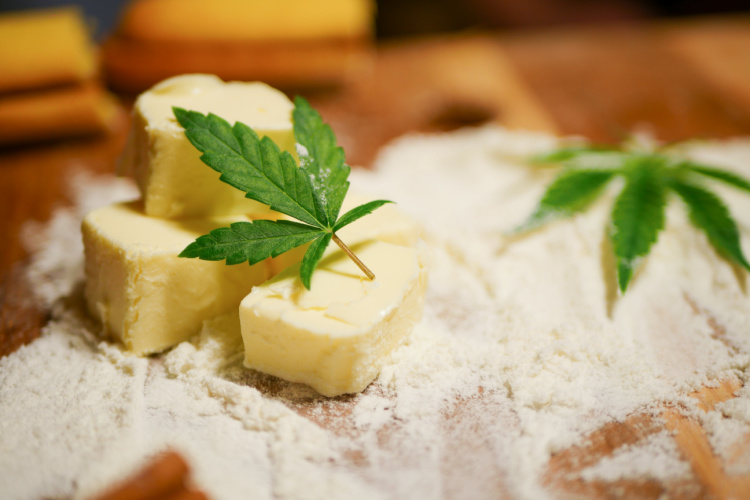
Ingredients:
- 7 grams decarboxylated flower
- 1 cup butter
- 1 cup water
Instructions for Making Cannabutter:
First, decarb your flower as outlined above. Once your flower is decarbed, you can begin the cannabutter-making process.
Combine butter and water in a saucepan on a low heat. Once the butter has begun melting, add your decarbed flower. Keep simmering at a low heat (about 170 Fahrenheit or so) for between 2 and 3 hours. Never let it boil fully!
Finally, let the butter cool slightly (but make sure it's still in liquid form) and strain the cannabutter into a jar through a cheesecloth. Refrigerate until solid, then seal with a lid. If any water separates during solidification, you can discard that excess water.
How to Cook with Cannabis: Infused Coconut Oil
Sometimes, you don’t want to cook with butter. In that case, coconut oil makes a great substitute that readily absorbs THC and tastes great. Check out this recipe.
Ingredients:
- 7 grams decarboxylated flower
- 1 cup coconut oil
Instructions:
Place both the coconut oil and the flower into a high heat-rated Mason jar or similar (Find out how to assess your jar for safety.) Place the jar into a pot. Fill the pot with enough water until the water line is above the oil/flower mixture. Important: Start with room temperature water (not cold, as that could cause the glass to break), bringing it to a boil slowly.
Both the jar and the pot should remain uncovered for ventilation. Keep on a medium boil for 2 hours, monitoring closely. Keep an eye on the water level, since some of it will boil off. Add more water, as needed, to maintain the original water level in the pot.
Lastly, let the oil cool slightly (it still needs to be in liquid form but you don’t want it steaming hot), then strain the canna oil into another jar through a cheesecloth. Once cool, seal with a lid.
Cooking with Cannabis: Wrapping Up
Now that you know how to cook with cannabis, you need to start working on your own recipes! First things first, though. You’re going to need to stock up on some flower of your own. That’s where we come in. Check out our full selection of flower or come visit our dispensary to get cooking. We look forward to serving you!
Zurple Punch Weed Strain: A Complete Guide
Are you the kind of cannabis enthusiast who’s always searching for the next hot strain? If you are, look no further than Zurple Punch. Zurple Punch is a cannabis strain that will soon carve a name for itself in the annals of the weed world. With great flavor and pleasant middle-of-the-road effects you’re not going to want to sleep on it.
Marijuana Reviews: Zurple Punch Weed Strain
Zurple Punch is a fairly rare cannabis strain. It’s also fairly new, which may contribute to that—some people just haven’t caught on yet. That gives savvy cannabis lovers the opportunity to get in on the ground floor with this impressive strain. If you’re the kind of person who chases rare genetics, the strain is not to be missed.
Zurple Punch: Genetics and Effects
This strain’s unique name comes from its parents. Zurple Punch is a cross of Zkittles (a hugely popular strain over the last few years) with Purple Punch (an older, but still popular strain). That lineage gives Zurple Punch a fairly balanced hybrid genetic profile.
That genetic profile plays a large role in determining the effects of this strain. Users report that it helps to spark creativity and sociability. It also may heighten the sensitivity of certain senses. Additionally, some fans of the strain say that it helps them relax and chill out.
Zurple Punch often tests between 20% and 23% THC, putting it in the “middle of the road” category of weed strains. It’s not so strong that it’s overwhelming for those new to cannabis, but its effects are powerful enough to please even the most experienced cannabis enthusiast.
THC isn’t the only thing that determines the effects of Zurple Punch, though. It also contains nearly 1% CBD. While that may not sound like much, many strains contain even less CBD. That means Zurple Punch actually has a decent amount of CBD.
Terpene Profile: Flavor and Aroma
It has a unique flavor and fragrance that cannabis connoisseurs won’t find in many other strains. It combines notes of blue cheese and sweet berries with some distinctively nutty tones. Additionally, a faint lavender fragrance permeates this strain.
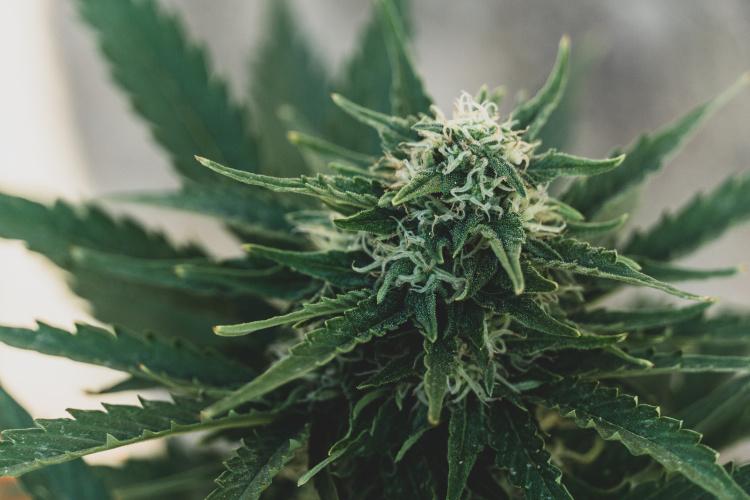
You can thank its terpene profile for that. Terpenoline influences Zurple Punch’s fragrance and tastes the most with its floral funk, along with some help from:
- Caryophyllene: Caryophyllene is the only terpene that’s also a cannabinoid, which puts it in a unique position. It has a sharp, spicy taste, and you can find it commonly in black pepper. According to some research, it may be effective at reducing swelling.
- Pinene: The most common terpene in nature, Pinene, has a fresh and uplifting scent that you may associate with evergreen trees.
- Limonene: Limonene contains the very essence of citrus flavor. You can find this zesty, upbeat terpene n in (you guessed it) citrus plants and their fruits. Some research suggests this terpene may have anti-inflammatory, anti-oxidant, and gastroprotective properties, among others.
Zurple Punch Strain Takeaways
All in all, this is a strain on the precipice of greatness and certainly a strain worth seeking out. Stop by Takoma Wellness Center, call or browse our online menu to see what products we’re currently carrying.
Questions? Comments? Please feel free to reach out: We’re always here to help. And we look forward to serving you!
Vaping CBD: A Gentler Way to Access this Crucial Cannabinoid
If you’re new to the world of cannabis or returning after a break, you’re probably intrigued by the high-tech devices known as vaporizers or “vapes.” Whether they’re the sleek pen-style devices or more full-featured units, they all work on the same basic principle: That by heating cannabis to the point at which its beneficial cannabinoids become volatile, they deliver a cool and potent mist without any potentially harsh smoke or burnt plant matter.
This raises a question: Can you vape CBD? Absolutely! In fact, high-CBD vape pens are among the most popular items at our D.C. dispensary. And if you’re new to the world of CBD vaporizers and vaping CBD oil, you’re in for a treat. Because they work electronically to emit a cool-mist rather than potentially harsh smoke, vapes go easy on our lungs while delivering the same fast-acting benefits as smoked cannabis.
As revolutionary as these devices are, they promise an even greater reward. CBD vaporizers are one of the most popular and fastest-growing segments of the cannabis market, and it’s no surprise why. CBD vapor benefits include the potential to relieve:
- Chronic pain and inflammation
- Anxiety and stress
- Insomnia and sleeplessness
If you’ve been wondering how to access all the potential benefits of vaping CBD oil, you’ve come to the right place! In today’s article, we’ll share everything we know, including specific recommendations for CBD vaping products.
Vaping CBD: How CBD Partners with the Body
As one of the two principal cannabinoids—or “major active ingredients”—in cannabis, CBD has been linked to a number of potential health benefits. In addition to helping treat certain seizures, CBD shows promise in reducing anxiety and stress, addressing chronic pain, even helping us get a better night’s sleep.
Of course, THC—the most abundant cannabinoid, and the one most directly responsible for the marijuana plant’s characteristic “high”—is also linked to a number of potential health benefits in its own right. However, there’s a very major difference. Unlike THC’s intoxication, CBD’s psychoactive effects are not intoxicating, At most, some people report feeling a gentle cerebral “buzz.” This makes CBD-only or high-CBD vaporizers a great choice for those looking for symptomatic relief without potentially distracting psychoactivity.
Both CBD and THC work with the body through the endocannabinoid system (ECS), a vital regulatory network that helps our bodies stay healthy, regulate memory and sleep, and maintain homeostasis, among other functions. In a very real sense, the cannabinoids are “speaking the same language” as this important bodily system. Some researchers believe this is a crucial point when it comes to understanding the wide range of potential benefits associated with CBD, THC, and other cannabinoids.
Potential CBD Vape Benefits
As we referenced a moment ago, the key distinguishing point about all vaporizers is that they heat (rather than burn) cannabis. Whether the cannabis in question is flower, concentrate, distillate or some other format, the principle is the same: By heating the material to the point at which the cannabinoids, terpenes, and other compounds become volatile, vapes deliver all the medicinal benefits and none of the smoke.
This begs a question: Is smoking cannabis bad for your lungs? While there’s not a consensus, the majority opinion is that it’s objectively less harmful than smoking tobacco. That said, smoking anything—including cannabis flower—still brings potentially irritating smoke into our lungs. And if you’re focused on leveraging the benefits of cannabinoids such as CBD, it’s a good idea to reduce any potential irritants from entering your airways.
Some of our customers are concerned that the experience of vaping CBD is less powerful than smoking it. That’s a contentious question. While some users claim that smoking cannabis delivers a more intense high, remember here that the point of vaping CBD isn’t to experience maximum intoxication. And in fact, compared with inhaling smoked cannabis, the bioavailability (or medical activity of the cannabinoids) is actually higher when using a vape. For this reason and others, we still recommend that those primarily interested in the medicinal effects of CBD try vaping as a smoother, less potentially irritating alternative to smoking.
By now we’ve covered many of the potential benefits of vaping CBD. Now we’ll segue into a discussion of a few products designed to deliver this medically active compound.
Vaping CBD: What to Look For in a Vaporizer
There are several options when looking to purchase a vaporizer, since you can vaporize the active ingredients in cannabis from flower directly or from cannabis concentrates.
The popular 510 threaded vape pen batteries accept cartridges from many different brands and producers, so you can use the same battery with any number of oil-filled cartridges—including those that contain higher levels of THC should you want to try that route at some point.
There are also vaporizing units, both handheld and tabletop, made specifically for vaporizing cannabis flower only. But of course, vaping CBD from a vaporizer capable of working with flower demands, well, flower. Because a growing number of our customers have expressed interest in high-CBD strains of flower, we make sure to always have at least a couple on hand. You can see what’s fresh and new by checking our selection of high-CBD, low-THC flower strains.
Or, you might choose a handheld or tabletop unit designed to vaporize potent cannabis concentrates. Lastly, there are units that can vaporize both flower and concentrates, and these units often come with different attachments for each.
Regardless of which option you choose, you can expect the same fast-acting effects as with smoked cannabis, only delivered in a delightfully gentle and cool mist.
CBD Vaping: Final Thoughts
With the cannabis market expanding on a constant basis, it’s truly exciting to see the high-CBD products that are constantly hitting our dispensary shelves. From high-CBD flower to CBD-infused edibles to CBD-rich tinctures and oils, there’s seemingly no limit other than the skill and imagination of local cultivators, processors, and manufacturers.
If you’re interested in learning more about how CBD works with your body to deliver specific benefits, we’d love to help! As Washington’s #1 family-run medical marijuana dispensary, we’re dedicated to helping you get the very most from your cannabis experience. Have any other questions about vaping CBD (or any other questions in the wide world of cannabis)? Just ask! We’re always here to help.



